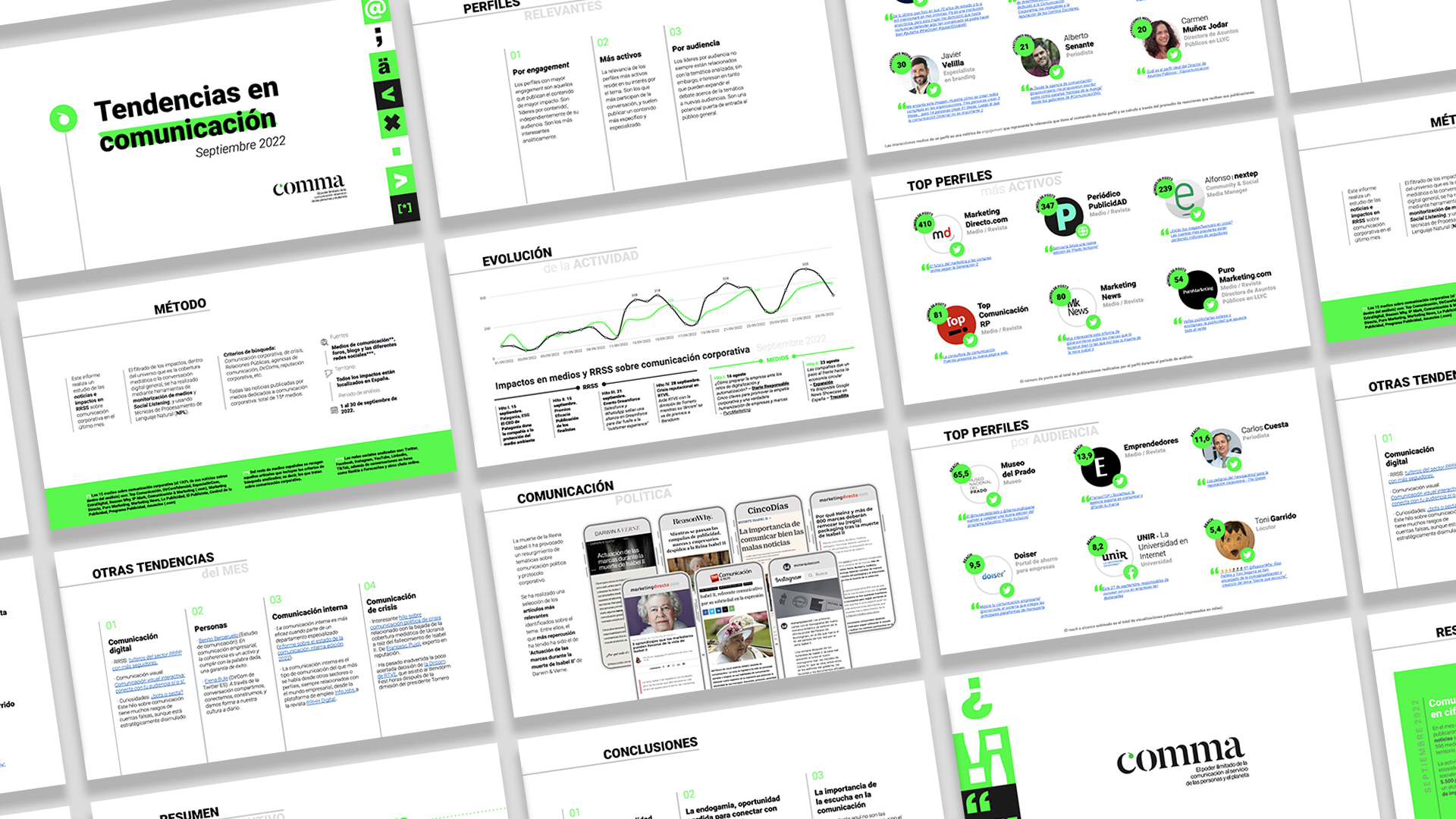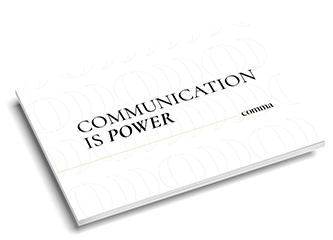As part of comma’s aim to put the power of communication at the service of people and the planet, we have created Monthly trends in communication. This is a monthly exercise whose objective is to provide an objective, data-driven sectoral radiography, allowing sector professionals to have a frame of reference – beyond intuition – of the dominant voices, the most active topics, sectors and professionals, and the main interests of the audiences;
On a monthly basis, our data analytics team will publish a report in which we will periodically analyse the key issues in the sector, the protagonists with the most impact and relevance in the debate, the issues that generate the most conversation and their scope, and the most active media in the dissemination;

We kick off September with our first report whose conclusions are:
- A topical event – the death of Elizabeth II- has conditioned the conversation and has marked that the trend of the month is political communication.
- Opinion leaders are not necessarily industry leaders; The absence of professionals such as directors, presidents of consultancy firms or academic staff among the most relevant profiles is striking;
- Sectoral endogamy, a wall to connect with new audiences; Connecting knowledge with current affairs would help to spread the profession;
Regarding the profiles of the month, the opinion leaders by content are Patricia Centeno, specialist in corporate and political aesthetics is the professional who has achieved more engagement, well ahead of de Desieré Escribano (journalist), Javier Velilla (branding specialist) or Carmen Muñoz Jodar (LLYC).
The most active profiles are sectorial media, and Marketing Directo, stands out, followed by Periódico PubliciAD. In the top profiles by audience, theMuseo El Prado.
Beyond the conclusions of this report -one of the many that can be made-, from comma we claim the importance of listening in the communication work, as well as the value of data as a roadmap in the design of communication strategies;
For Marta Espuny, head of data analysis at comma, “the important thing is not the data, but the information we extract from it. Knowing how to select and process them will be essential to define the most realistic strategy, adapted and coherent with the story of the organisations. Data gives power and provides a fundamental framework for action in order to proceed with knowledge, and not by mere intuition. Transforming that information into specific coordinates and concrete actions to be taken empowers brands.”







